VOL- 10 ; ISSUE 1 - PUNE RESEARCH SCHOLAR (ISSN 2455-314X) JIF 4.15
10.1 SCHOLAR
Area of Article :
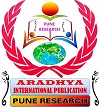
VOL- 10 ; ISSUE 1 - PUNE RESEARCH SCHOLAR (ISSN 2455-314X) JIF 4.15
10.1 SCHOLAR

VOL- 10 ; ISSUE 1 - PUNE RESEARCH SCHOLAR (ISSN 2455-314X) JIF 4.15
10.1.1 SCHOLAR
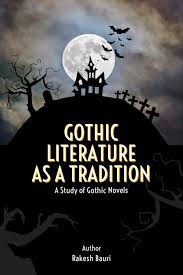
The
major aim of writing this research paper is to explore the subject of social
critique in Gothic literature, focusing on how it reflects the horrors,
anxieties, fears and social values of its times. Social critique in the domain
of gothic fiction talks about social, political and cultural affairs around
humans. Gothic literature since its beginning I.e. 18th century to
the present day continues to work as a means to discuss social and cultural
matters along with an amalgamation of gloomy and horrifying settings that gives
thought to and exposes the marginalized and suppressed groups. The classical
authors of Gothic fiction such as Mary Shelly, Bram Stoker and Edgar Allan Poe
often question the themes of gender bias, imperialism and socio-economic
inequality. Even in the present scenario, the writers try to use this genre to
discuss globalization, post-colonialism and ecological apprehensions by using
the elements of the grotesque.
VOL- 10 ; ISSUE 1 - PUNE RESEARCH SCHOLAR (ISSN 2455-314X) JIF 4.15
10.1.2 SCHOLAR
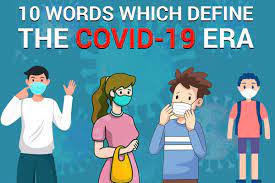
English, as a global
language, undoubtedly, enables the people to communicate cogently, keep in
touch, do business, and, of course, share their cultural heritage in the modern
globalized world.
Barring English, no other language has gained such a recognition, especially
when it comes to global communication.
In India, English is perceived as a status symbol. Even the parents who
are unable to afford expensive English medium education, do aspire to send
their children in such types of institutes to learn English. Thanks to the
information and communication technology (ICT), that has hailed to render
English teaching and learning process easily accessible to common people; the
lock down during Covid Era proving to be a blessing in disguise for such
learning and empowering. In the early days of technical innovations, teaching
resources like audio cassettes, popular movie clips, and video clips etc. were
used as excellent media to illustrate varieties of spoken English. These
resources were, however, considered to be expensive and beyond the reach of
common man. Now, with the integration of ELT with technology, E-learning has
enabled common man to learn and communicate in English effectively; and the
process, once supported with right kind of material and pedagogy under the lens
of native wisdom, becomes obviously more enjoyable. Over to that the requisite
knowledge and skill simulated through computers have brought a sort of
revolution in human learning and emerged as an inseparable trend in Education
as well as in English teaching and learning. Web-based classes have emerged as
the most promising alternative to study English. Such advancements in
E-Learning are providing opportunities to create well-designed,
learner-centered, interactive, affordable, efficient, and flexible learning.
Needless to emphasize, E-learning, today, has truly hailed to contribute to a
plethora of new possibilities in ELT. The very process is, however, not, at
all, without its own challenges which, of course, need to be taken care of. I have, through this research
paper, tried to undertake an assessment of these emerging trends of E-Learning,
and its impact on teaching and learning of English language.
Key Words: Challenge, Information and Communication
Technology (ICT) English
Language Teaching (ELT) Methods,
Trends.
VOL- 10 ; ISSUE 1 - PUNE RESEARCH SCHOLAR (ISSN 2455-314X) JIF 4.15
10.1.3 ENGLISH
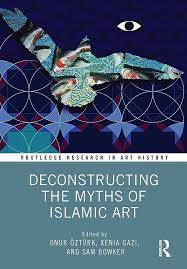
Literary devices are tools used by writers to better express
their ideas, and convey the message they intend to, in a more emphatic manner.
These devices thus help highlight special concepts; and, as a result, enhance
the reader’s understanding of the text. Every creative artist, depending upon
his perspective, degree of maturity and expertise, employs these devices; and,
adopts a style of expression suitable to the content and theme/s he intends to
convey to the masses. Having commenced its humble journey in second quarter of
20th century in the hands of great trio: RK Narayan, Raja Rao and Mulk Raj
Anand, Indian English fiction, today, has marched miles ahead; and stands
rock-like amidst the literary world; not only in versatility of themes, but in
the varied styles of expression as well. Themes ranging from a woman’s
identity, undue suppression, and, survival against their unequal status, have
duly been explored by many a creative writers of late 20th century by adopting
styles suitable to their choice and message. Not satisfied with woman’s passive
role, however; Githa Hariharan, adding a new dimension to Indian English
fiction, hails to legitimately register her angry protest and argues that a
woman should no longer remain a passive sufferer to age old taboos, and must
dare to assert her individuality. And, among other devices she picks for
expressing her angst, ‘sarcasm’ finds its due place. Through this research
paper, I have humbly attempted to critically evaluate use of ‘sarcasm’ as a
literary device in her fiction; as she breaks through the age old taboos like
patriarchy; suggests strongly to mark her own identity, and, not to hesitate
stepping out of the institute like ‘marriage’ if it fails to fulfil its
promises.
Key
Words: deconstruction, rewriting,
devices, sarcasm, message, expression, ideas.
VOL- 10 ; ISSUE 1 - PUNE RESEARCH SCHOLAR (ISSN 2455-314X) JIF 4.15
10.1.101 स्कॉलर
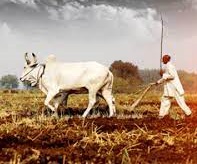
भारतीय शेतीची सर्वात
मोठी समस्या ही आताचा शेतकरी हा
अल्पभूधारक झाला आहे. भारतात शासकीय पातळीवर शेती विषयक मोजमाप नोंद, लागवडीखालील क्षेत्र, ओलिताखालील
क्षेत्र, पडीत जमीन इत्यादी ची गणना 1970 पासून चालू आहे. 1970- 71 च्या शेतीविषयक गणनेनुसार, प्रत्येक
भारतीय शेतकऱ्याकडे सरासरी 2.28 हेक्टर जमीन होती. हेच
प्रमाण 1995
-96 मध्ये 1.82 हेक्टर आहे. 2010 च्या शेतीविषयक गणनेनुसार एकूण 70 टक्के
भारतीय शेतकऱ्यांकडे 1 हेक्टरपेक्षा कमी शेती
आहे. म्हणजे आज घडीला 70 टक्के भारतीय शेतकरी
अल्पभूधारक आहेत. भारतातील एकूण लागवडीखालील क्षेत्रापैकी 44 टक्के क्षेत्रावर अल्पभूधारक शेतकरी शेती करतात, आणि देशातील अन्नधान्याच्या जवळपास सर्व गरजा पूर्ण करतात .
अल्पभूधारक शेतकऱ्यांना त्यांच्या उत्पन्नावर मिळणारा नफा मात्र नाममात्र आहे.
VOL- 10 ; ISSUE 1 - PUNE RESEARCH SCHOLAR (ISSN 2455-314X) JIF 4.15
10.1.102 स्कॉलर

भारत सबसे युवा राष्ट्र बनने के लिए तैयार है, लेकिन जब रोजगार
का सवाल आता है, तो भारत में नौकरी की उपलब्धता बहुत ही सीमित पाई जाती है और यहां तक कि जब भारत में बड़े पैमाने
पर सस्ती जनशक्ति उपलब्ध है और इन स्थितियों का मुकाबला करने के लिए नई नौकरियाँ पैदा
की जानी चाहिए। टियर 1 शहरों में हैं नौकरी के प्रचुर अवसर
हैं लेकिन टियर 2 और टियर 3 शहरों में इसकी कमी है। दूसरी ओर भारत
का जनसांख्यिकीय लाभांश सकारात्मक है | जनसांख्यिकीय लाभांश का लाभ उठाने के लिए भारत
सरकार ने एक योजना 'स्टार्टअप इंडिया' की घोषणा की। स्टार्टअप इंडिया अभियान
का उद्देश्य स्टार्ट-अप उद्यमों के लिए बैंक वित्तपोषण को बढ़ावा देना जो अंततः उद्यमशीलता
को बढ़ावा देता है जिसके परिणामस्वरूप अंततः रोजगार सृजन होता है।